Pectineus muscle strain
Table of Contents
What is the pectineus muscle strain?
- Pectineus muscle strain is an injury to the muscle-tendon unit that produces pain on palpation of the adductor tendons or its insertion on the pubic bone & pain in the adductor region on resistance testing of the adductors. pectineus muscle strains are encountered more frequently in ice hockey & soccer.
- These sports require a muscular eccentric contraction of the pectineus musculature during competition & practice. The underlying injury is most frequently a muscle or tendon strain at the insertion of the tendon of the pectineus muscle to the bone. The pectineus muscle is most generally injured.
Anatomy of the Pectineus muscle

Origin: pectineal line & adjacent bone of the pelvis
Insertion: The oblique line extending from the base of the lesser trochanter to linea aspera on the posterior surface of the femur.
Nerve supply: The pectineus is predominately supplied by the femoral nerve (L2, L3). However, in some people pectineus may receive innervation from 2 separate nerves of the lumbar plexus.
Blood supply: The superficial portion of the muscle is supplied by the medial circumflex femoral artery, a branch of the femoral artery. The deep part of the muscle is vascularised by the anterior branch of the obturator artery, itself a branch of the internal iliac artery.
Function: Due to the course of its fibers, the pectineus both flexes & adducts the thigh at the hip joint when it contracts. When the lower limb is in the anatomical position, contraction of the muscle first causes flexion to happen at the hip joint. This flexion can go as far as the thigh at a 45-degree angle to the hip joint.
What is the difference between pectineus tendinopathy & strain?
- First of all, strains are acute & tendinosis is chronic. Tendinosis is a repetitive strain.
- The second difference is that acute injuries are more often localized in my tendon junctions & chronic injuries are localized at the tendinous insertions on the pubic bone.
What are the causes of Pectineus muscle strain?
- Pectineus muscle strains are common amongst athletes who compete in sports that involve repetitive twisting, turning, sprinting & kicking such as football, ice hockey, Australian & Gaelic football. strains are reported more in males compared to female football athletes. Injuries in men accounted for 4–19% of all injuries & 2–14% in women.
- The exact incidence of pectineus muscle pull in most sports is unknown because athletes often play through minor groin pain & the injury goes unreported. In addition, overlapping diagnoses can change the incidence. The cumulative or single injury seems to be an important etiological factor. Chronic tendinitis of the adductor muscles or tendons, especially that of the pectineus, is the most generally diagnosed.
The strain mechanism can be divided into 3 groups:
Direct blunt trauma: An acute injury, generally a direct injury to the soft tissues resulting in muscle hematoma.
Forceful contraction: The most general groin injury in athletes is muscle & tendon strain of the adductor muscle group. Change of direction & kicking has been described as the main actions resulting in Pectineus injury. Videos analysis of acute Pectineus injuries in 17 professional male football players showed most injuries happened in non-contact situations, following a fast reaction to a change in play. Injury actions included changing direction, kicking, reaching or stretching & jumping. The injury may also happen during a forceful concentric contraction of the muscle. Lower-extremity athletes such as ice hockey & soccer players are naturally more prone to this pathology due to the repetitive twisting, turning, sprinting & kicking.
Microtrauma by repetitive injury: musculotendinous injuries to the groin primarily result from cumulative microtraumas (overuse trauma, repeated minor injuries) leading to chronic groin pain.
Symptoms of Pectineus muscle strain
- The main sign of Pectineus muscle pull is intense pain in the groin part. Muscle strain injuries often arise from excessive stretching or stretching when the muscle is entity activated. When a muscle strain occurs, the damage is frequently localized near the muscle-tendon junction. Acute Pectineus injuries may also involve tendinous rupture or avulsion, primarily at the proximal insertions.
- Clinically for a Pectineus strain, the patient presents with pain in the inner thigh & tenderness along the muscle belly, tendon, or insertion. The pain is exacerbated by adduction. Tears commonly happen at the myotendinous junction, which is the weakest part of the muscle-tendon unit but is also generally seen in the muscle belly. The mechanism of injury that results in a muscle tear in an adult may cause an apophyseal avulsion in an adolescent. There is a well-habitual clinical grading system for muscle tears, which has three components:
Grade 1: no loss of function or strength. Muscle tears can show normal appearances or a small part of focal disruption (<5% of the muscle volume), with hematoma & perifascial fluid relatively general on imaging with US & MRI.
Grade 2: severe, with some weakness. Injury corresponds to a partial tear, with muscle fiber disruption seen (>5% of the muscle volume) but not affecting the whole muscle belly. In acute grade 1 or 2 strains of the adductor muscle, there is intense pain in the groin part, like a sudden stab with a knife, if the athlete attempts to continue the activity. Generally, a hemorrhage & swelling can be seen a few days after the injury. A typical trauma history, localized tenderness & difficulties contracting the hip abductors.
Grade 3: complete muscle tear & total functional loss. Injuries are complete muscle tears with frayed margins & bunching and/or retraction of the torn muscle fibers. Complete muscle tears or grade 3 strains are most often found in the distal musculotendinous junction located toward the insertion of the femur.
What is the diagnosis of the pectineus muscle strain?
- First of all, there requires to be a patient history & an identification of the pain by the examination of the physiotherapist. On evaluation, there is tenderness to palpation with focal swelling of the adductors & decreased adductor strength & pain with resisted adduction. The diagnosis can be made with focal findings on asses using the guidelines from the Doha agreement classification system without the need for imaging. However, imaging can be useful to rule out or in differential diagnoses after a comprehensive clinical examination. Abnormal radiological findings around the pubic symphysis such as pubic bone marrow edema are general in athletes with adductor & pubic-related pain. These radiological findings are also general in asymptomatic athletes. Radiological findings alone might not be used in making diagnostic decisions as morphology does not necessarily mean pathology.
Examination
- Bilateral assessments of pectineus muscle & strength:
- palpation at the pectineus insertion at the pubic bone, adduction against resistance (squeeze tests in 0° & 45°), & passive stretching of the pectineus muscles.
- A clinical examination should be performed for every patient with groin pain. The injured athlete should first be examined by inspection in a standing position to examine the alignment of extremities. The patient might then be asked to lie in a supine position to be able to check the motion of the hip joint & the flexibility of the groin & hip muscles. The diagnosis classification system given by the Doha agreement should be used as a guideline for all groin injuries.
Squeeze Test
- First of all, there requires to be a patient history & an identification of the pain by the examination of the physiotherapist. On evaluation, there is tenderness to palpation with focal swelling of the pectineus & decreased pectineus strength & pain with resisted adduction. The diagnosis can be made with focal findings on asses using the guidelines from the Doha agreement classification system without the need for imaging. However, imaging can be useful to rule out or in differential diagnoses after a comprehensive clinical examination. Abnormal radiological findings around the pubic symphysis such as pubic bone marrow edema are general in athletes with adductor & pubic-related pain. These radiological findings are also general in asymptomatic athletes. Radiological findings alone might not be used in making diagnostic decisions as morphology does not necessarily mean pathology.
Differential Diagnosis
- Traditionally, pain & strain has been thought to be complex with various definitions & terminologies without any diagnostic criteria. In a systematic review on the treatment of groin pain in athletes, more than 30 different diagnostic terminologies were used to describe pectineus pain which adds up to the complexity of groin strain in athletes.
- A classification system of groin pain was described in 3 main subheadings during the Doha agreement meeting;
Defined Entities.
- Adductor-related groin pain
- Iliopsoas-related groin pain
- Inguinal-related groin pain
- Pubic-related groin pain
- Hip-related groin pain
Other musculoskeletal causes.
- Inguinal or femoral hernia
- Posthernioplasty pain
- Nerve entrapment
- Obturator
- Ilioinguinal
- Genitofemoral
- Iliohypogastric
- referred pain
- Lumbar spine
- Sacroiliac joint
- Apophysitis or avulsion fracture
- Anterior superior iliac spine
- Anterior inferior iliac spine
- Pubic bone
- Referred pain
Not to be missed.
- Stress fracture
- Neck of femur
- Pubic ramus
- Acetabulum
- Hip joint
- Slipped capital femoral epiphysis (adolescents)
- Perthes’ disease (children and adolescents)
- Avascular necrosis or transient osteoporosis of the head of the femur
- Arthritis of the hip joint
- Inguinal lymphadenopathy Intra-abdominal abnormality
- Prostatitis
- Urinary tract infections
- Kidney stone
- Appendicitis
- Diverticulitis
- Gynecological conditions Spondyloarthropathies
- Ankylosing spondylitis Tumours
- Testicular tumors
- Bone tumors
- Prostate cancer
- Urinary tract cancer Digestive tract cancer Soft tissue tumors
Medical treatment
- Management is non-operative with rest, ice, compression, analgesia & physical therapy. Analgesia involves non-steroidal anti-inflammatory agents that help in reducing pain. Injection at the pectineus enthesis is helpful for refractory patients with conservative treatment.
- Non-operative therapy should be tried for several months & is successful in most instances. However, if symptoms & significant restriction of performance persist after an appropriate conservative treatment regimen, surgical intervention might be considered. Adductor tenotomy has been suggested as a technique to improve symptoms.
- In a recent systematic review that compared surgical intervention to conservative intervention, there was a faster return to return to play(RTP) time in athletes who had surgical intervention. However, the varied nature of surgical interventions & lack of quality randomized control trial (RCT) in the meta-analysis makes it impractical to recommend the surgical intervention.
Pectineus muscle strain prevention program
Warm-up
- Bike
- Adductor stretching
- Sumo squats
- Side lunges
- Kneeling pelvic tilts
Strengthening program
- Ball squeezes (legs bent to legs straight)
- Different ball sizes
- Concentric adduction with weight against gravity
- Adduction in standing on a cable column & elastic resistance
- Seated adduction machine
- Standing with included foot on sliding board moving in the sagittal plane
- Bilateral adduction on a sliding board moving in the frontal plane (ie, simultaneous bilateral adduction)
- Unilateral lunges with reciprocal arm movements
Sports-specific training
- On the ice, the kneeling adductor pulls together
- Standing resisted stride lengths on cable column to restore skating
- Slide skating
- Cable column crossover pulls
Clinical goal
- Adduction strength at least 75% of the abduction strength
Physiotherapy treatment
Immediately after injury, the goal of treatment for a groin strain is to reduce pain & swelling. The first some days of treatment follow the protocol for any muscle injury:
- rest
- ice
- compression
- elevation
- nonsteroidal anti-inflammatory drug (NSAIDs)
Depending on the severity of groin strain, you may need additional treatments to speed healing. These might include:
- physical therapy
- massage therapy
- heat & stretching
- strengthening exercises
- electrotherapy
The First 24-48 Hours
Your physical therapist may advise you to:
Rest the part. This may include avoiding walking & any activity that causes pain. They may recommend crutches to reduce strain on the muscles when walking.
Apply ice packs to the part for 15 to 20 minutes every 2 hours.
Compress the part with an elastic bandage wrap.
Consult with another health care provider for services, such as medication or diagnostic tests.
The physical therapist will personalize a treatment plan for you based on your unique condition & goals. the plan may include treatments to:
Reduce pain: Physical therapists may use different treatments & technologies to control & reduce pain. These may include ice, heat, ultrasound, electrical stimulation, taping, exercises, & hands-on therapy, such as massage.
Improve motion. A physical therapist will choose specific activities & treatments to help restore normal movement in the leg & hip. These should start with a “passive” movement that the therapist performs for you to gently move the leg & hip joint. They will help you progress to doing active exercises & stretches that you perform yourself.
Improve strength. Exercises will heal at each stage of recovery. Your physical therapist will teach you the appropriate exercises to steadily restore strength & agility. These may include using cuff weights, elastic bands, weight-lifting equipment, & cardio-exercise equipment, such as treadmills or stationary bicycles.
Speed recovery time. Your physical therapist is trained & experienced in choosing the right treatments & exercises to help you heal. They can help you return to the normal lifestyle & reach your goals faster than you are likely to do on your own.
Promote a safe return to activities. Your physical therapist will work with you to decide on the recovery goals, including the return to work or sport. They will design the treatment program to help you reach those goals in the safest, fastest, & most effective way possible. A physical therapist will use hands-on therapy, such as massage, and teach you exercises & work retraining activities. The physical therapist also may teach you sport-specific techniques & drills to help you achieve any sport-specific goals.
Prevent future re-injury. A physical therapist can recommend a home-exercise program to strengthen & stretch the muscles around the hip, upper leg, & abdomen. Doing these prescribed exercises can help to prevent future re-injury of the groin. These may include strength & flexibility exercises for the leg, hip, & core muscles. Reduce pain: Physical therapists may use different treatments & technologies to control & reduce pain. These may include ice, heat, ultrasound, electrical stimulation, taping, exercises, & hands-on therapy, such as massage.
Pectineus muscle stretching exercise
- The Pectineus muscle involves the inner leg muscles, called the groin. The pectineus muscle stretch will include the group of muscles that has a significantly large muscle mass. The key action of these muscles is to pull the leg inward. There is more useful for them in sports such as soccer, where these muscles are used in kicking a soccer ball with the inside of the foot. Finally, they are utilized in flexion & extension of the thigh when against resistance or running.
- Lunge Stretch
- Standing Lateral Lunge Stretch
- Butterfly Stretch
- Pectineus AIS Release
- Supine Wall Stretch
- Standing Pectineus Stretch
- Kneeling Pectineus stretch
- Half-kneeling Pectineus dips
- Frogger stretch
- Lateral squat
- Crossover stretch
- Seated Pectineus Stretch
- Reclining angle bound pose
- Standing banded adduction
- Hip Opener and Groin Stretch
- Squatting Groin Stretch
- Frog Squat With Arm Raise
- Runner’s Lunge

- Lunge Stretch
How to perform stretch:
- Begin kneeling on the ground in a lunge position.
- Bend your torso forward to bring the outside of the shoulder towards the interior of the lead knee.
- Then, lunge forward so the hips slide forward.
- You can feel a stretch along the inside of the forwarding leg.
- Hold this adductor stretch for 5- 10 seconds then release.
- Perform 10-12 repetitions.
2. Standing Lateral Lunge Pectineus Stretch
How to perform stretch:
- Stand in a broad stance position.
- Now bend your & knee & move your hips to that side.
- maintain posterior pelvic tilt during the stretch
- You can feel stretch inside of the opposite thigh.
- Hold for 5-10 seconds & release.
- You can enhance holding time in progression.
- Do this adductor stretch 4-5 times.
3. Butterfly Stretch
How to perform stretch:
- Sit down on the ground with your legs in front of you.
- Reach forward & grab your left foot.
- You can bend the knee to help the hand & foot join.
- Slowly pull your left foot up towards the groin bending until it is at a comfortable place & the sole is facing your right thigh.
- Bend your right knee to bring your right foot toward the groin so that it only touches the sole of your left foot.
- Hold both feet with your hands & place your elbows on the knees.
- While maintaining the back straight, allow your knees to fall towards the ground.
- You can give gentle pressure to the inner thigh by pressing gradually on the knees with the elbows.
- You might feel pulling & tension in your groin.
- Hold the butterfly stretch for 20-30 seconds.
- Release & repeat 2-3 times.
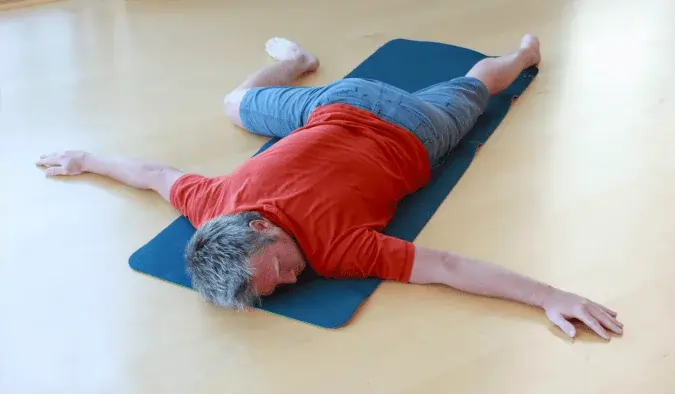
4. Pectineus AIS Release
How to perform stretch:
- Begin in a supine position with a resistance strap on around one foot.
- The opposite end of the strap is grasped in the hand.
- Then, actively slide the foot sideways.
- make sure to slide the foot, don’t raise it or the hip flexors can contract.
- At the end of the movement gradually pull the foot further outwards with the resistance strap.
- You can feel a stretch in the adductors.
- Hold the stretch for 5 to 10 seconds then slide to return.
- Perform 8-10 repetitions.
5. Supine Wall Stretch
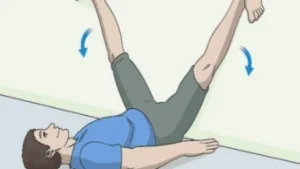
How to perform stretch:
- In the supine position in front of a wall with the leg up on the wall.
- move towards the wall as you can, and maintain a comfortable stretch in the hamstrings.
- Maintain the leg straight while they slowly split open until you feel a stretch inner side of the legs.
- Hold the stretch for 15-30 seconds.
- Relax & repeat 3 times.
6. Standing Adductor Stretch
How to perform stretch:
- Start standing with the feet around 3 feet apart.
- Transfer the weight to one side & bend your knee.
- Keep the other knee straight to feel a stretch on the inside of the thigh.
- Hold the stretch for 15-30 seconds.
- Relax & repeat on the other side.
7. Kneeling adductor stretch
How to perform stretch:
- Begin with your knees & hands on the ground.
- Straighten out a left leg to the side. Try to keep the leg on the floor.
- Move your butt back to the heel of your right bent knee.
- You can feel the stretch on the inner thigh of the left leg.
- Pause for 8-10 seconds, then release the stretch & back in.
- Repeat 8-10 times.
8. Half-kneeling pectineus dips
How to perform stretch:
- Start in a half-kneeling position with the right knee on the floor & the left leg bent with the foot on the floor.
- Move the left leg out to the side as much as you can.
- Your foot might be at a right angle to your knee.
- With your hands on your hips, dip the body toward the left leg.
- You can feel the stretch on the inner thigh—especially on the right side.
- Repeat 8-10 times.
9. Frogger stretch
How to perform stretch:
- Start with your knees & forearms on the ground with your knees & feet wider.
- Try to keep the inner part of your feet on the floor.
- Sit the butt back to the heels, feeling the stretch on the inner thighs.
- Pause for 10-15 seconds, then release the stretch & back in.
- Repeat 8-10 times.
10. Lateral squat
How to perform stretch:
- Stand tall & put the feet double shoulder-width apart.
- Transfer your weight to your left leg, bend your left knee, & push your hips back as if you are taking a sitting position.
- Drop as low as possible while keeping your right leg straight.
- Keep the chest up & your weight on the left leg.
- Breathe & hold for 15 to 20 seconds prior to returning to the beginning position.
- Repeat 2-3 times, then move to the other side.
11. Crossover Stretch
If you love dancing, this move might come naturally as it is the same as the “grapevine” dance move.
How to perform stretch:
- Start with the feet together, then step to the right with the right foot.
- Cross your both foot.
- Step to the right again with your right foot, & bring your left foot to join your right foot.
- Once both the feet are together and repeat on the opposite side.
- You can start gradually, but pick up the stride as you get used to the move.
- Do it 5-10 times.
12. Seated pectineusStretch
How to perform stretch:
- Straight the legs out to the side, and make a “V” shape.
- To prevent joint strain, do not overdo this pose.
- For many people, simply sitting like this is enough to give an inner thigh stretch.
- If you want to feel more stretch, keep your back straight, and lean towards the floor from your hip joints.
- Stay there for around 10-15 seconds. breathe normally.
13. Reclining angle bound pose
This is the best stretch if you spend most of the day in a sitting position.
How to perform stretch:
- Take a supine position on the ground.
- Bend both knees & draw your soles inward so that their borders are touching each other.
- Move the knees down toward the floor so that you can feel the groin muscles stretching.
- Breathe & hold this position for 15- 30 seconds.
- Repeat 3-4 times. Try to draw the feet closer to the buttocks with every stretch.
14. Squatting Groin Stretch
How to perform stretch:
- Take a standing position with the feet wide apart, toes pointing outwards.
- Slowly start squatting down until your knees are directly over the ankles & bend to 90 degrees.
- Put your hands on top of your inner thighs & gently push outward to open the hips.
- You will feel a stretch in the inner side of each leg.
- Hold for 20 – 30 seconds, relax & repeat 3 times.
15. Hip Opener and Groin Stretch
How to perform stretch:
- Begin in a forward lunge position & drop your right knee to the floor.
- Place the left elbow on the inside of your left knee as pictured.
- Press the left elbow gently into your left knee & twist your torso to the right.
- Reach the right arm behind you until you feel a gentle stretch in the lower back & left groin.
- Hold the stretch for about 20-30 seconds, release & repeat on the right leg.
16. Squatting Groin Stretch
How to perform stretch:
- Take a standing position with the feet wide apart, toes pointing outwards.
- Slowly start squatting down until your knees are directly over the ankles & bend to 90 degrees.
- Put your hands on top of your inner thighs & gently push outward to open the hips.
- You will feel the stretch in the inner side of each leg.
- Hold for 20 – 30 seconds, relax & repeat 3 times.
17. Frog Squat With Arm Raise
How to perform stretch:
- Moving directly from the first stretch, place the right hand on the ground.
- Continue to gradually push your inner thigh outward, as you reach the left hand directly up to the roof, fingers pointed upward.
- With each breath, twist the upper body slightly further, reaching as high as you can.
- Your right heel might lift slightly.
- Then, switch the other sides.
18. Runner’s Lunge
How to perform stretch:
- Get on all fours, facing the front of the mat.
- Plant the fingertips gently into the floor as you extend your right leg behind you, maintaining the knee rested or lifted slightly.
- Press the right heel toward the back of the room.
- Bring the left foot forward so it is in line with your left hand.
- Maintain your head upwards.
- Inhale & exhale, driving the hips further into the ground with each breath.
- Then, move to the other sides.
Pectineus muscle Strengthening Exercises.
- Pectineus exercises utilize multiple small muscles in the inner thigh that are responsible for bringing the thighs together, providing balance & support, and proper hip alignment. Most people should only consider doing pectineus exercises whenever they walk past the hip adductor machine in the gym but we are here to change that Mentality.
- It is essential to strengthen the pectineus muscles to increase mobility & flexibility, enhance stability & prevent leg injuries. Strong abductors are an integral part of sports performance, maintaining mobility, & injury prevention, as you age. This is the main muscle group that contributes to hip mobility & strength. In terms of strength training, the adductors are mostly overlooked because they can be difficult to train properly.
- Standing Leg Circles
- Side-Lying Hip Adduction
- Squat Side Kick
- Standing side Leg Raise
- Sumo Squat
- Cross Scissors
- Dumbbell Side Lunge
- . Cossack Squat
- Copenhagen Side Plank
- Cable Hip Adductor
- Seated Hip Adduction
- Adductor machine
- Wide stance squat
- Standing banded adduction
- Seated banded adduction
- Standing Leg Circles
How to do it?
- This is the dynamic warm-up exercise, this exercise improves blood circulation to the hip muscle & upper leg.
- for standing leg circle exercise, stand with feet hip-width apart.
- Raise the left leg off the floor. while balancing on the right leg, make a small circle with your left leg.
- Complete 10 to 20 repetitions on the left side then change to the right leg.
- Note: If you have a balance problem then stand close to a prop where you can help to maintain your body by holding something.
2. Side-Lying Hip Adduction
How to do it?
- This is the best exercise for the hip adductors that can be done on the ground while isolating a single leg at a time.
- All you need to do is to focus on contracting the hip adductor muscles to raise your leg off the floor.
- For this exercise, you have to lie down on your left side and take your arms in front of you with your elbows & forearm on the floor for support. raise the right leg over your lower leg placing your heels against the thigh of your bottom leg.
- maintain your leg extended, and raise it upward as much as possible.
- Slowly return to the starting position.
- Do 10-25 repetitions on the left side then move to the right leg.
- Note: You can add some provocation to your exercise by using a resistance band attached to an anchor or by strapping an ankle weight to the leg.
3. Squat Side Kick
How to do it?
- The squat side kick bodyweight exercise will utilize both the adductors & the abductors & is a great all-around lower limb exercise.
- This exercise combines 2 movements that enable both muscle strengthening & stretching which is important to decrease the risk of suffering from groin pain.
- For the Squat Side Kick exercise, you have to stand with a shoulder hip-width apart, and your hands are together in front of you.
- Flexed your knees until your thighs are parallel to the floor, then stand up & transfer your weight to your right leg while kicking out the left leg to the side.
- Back to squatting position then repeat it on another leg.
- Note: Your core muscles might be engaged throughout the movement with your back straight, chest up, & do not let your knees extend past your toes while squatting.
4. Standing side Leg Raise
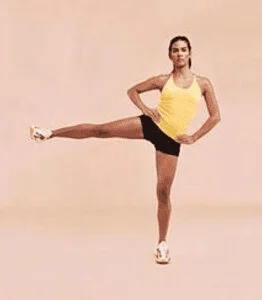
How to do it?
- This is the best bodyweight exercise that can hit the hip adductors of one leg while hitting the hip abductors of the other leg as you will be using an isometric hold on your other leg to maintain it in the air.
- For this exercise, you have to stand with your shoulders hip-width apart. now on the left leg away from the body.
- Then Lift the right leg as far as comfortable, & hold it there for 4-6 seconds.
- Raise your left leg to your right leg until they touch then lower back to the starting position. Complete 10-18 repetitions of 2-3 sets.
- Note: To make this exercise more challenging strap ankle weights to both legs.
5. Sumo Squat
How to do it?
- This variation of the squatting will hit the muscle groups in the lower limb plus the inner thighs.
- Maintain your back straight & your chest up throughout the exercise.
- Even though the sumo squat has a smaller range of motion compared with a regular squat, it is still an effective exercise that can be incorporated into normal workouts.
- For this exercise, you have to stand wider than the shoulder-width stance with your pointing outside.
- Take a squatting position, drop your hip down & back while your back is straight & chest up until your thighs are parallel to the ground.
- Push off through the ground and return to the starting position.
- Note: If you want to add some provocation to your exercise then hold a kettlebell in your hand.
6. Cross Scissors
How to do it?
- This is the best exercise to work hip adductor muscles & the core muscle simultaneously.
- Cross scissors are challenging as you require to stay in a crunched position throughout the movement.
- Maintain this position by crossing your legs in front of you need all your stabilizing muscles to be contracted.
- For this exercise, you have to Sit down & brace yourself by putting your hands on the floor back to you. move your leg off the ground in front of you at a 30-40-degree angle with one leg crossed over the other.
- Your core muscle might be engaged throughout the movement in a semi-“V” position change your legs out to the sides then bring them back closed while crossing the other leg over.
- Do this with an Alternate leg until you complete 10-20 repetitions on each side.
- Note: You can enhance the difficulty of cross scissors by sitting in a “V” position without bracing the upper limb with your arms.
7. Dumbbell Side Lunge
How to do it?
- The side lunge is an excellent exercise to improve your balance, stability, & lower limb strength.
- The side-to-side movement is both a strengthening & stretching exercise. Dumbbell Side Lunge exercise utilizes your hip abductors & hip adductor muscles.
- For this exercise, you have to stand with shoulder hip-width apart & hold the dumbbells at your chest level.
- Take a large step to your side & drop your hip down & back until your thighs are parallel to the floor while your foot is planted on the ground.
- Push through your flexed foot, & bring your back to the initial position.
- Repeat it for 10-15 repetitions then move to the next leg.
- Note: To make this exercise easy you can do bodyweight side lunges. your back might be in a neutral position & chest up while trying not to lean forward.
8. Cossack Squat
How to do it?
- Cossack Squat exercise moves the body through the frontal plane of motion, going side to side.
- Working lower limb at this angle can improve the flexibility of hips, knees, & ankles.
- You will increase your stability by mastering this exercise by getting a good stretch & strengthening the hip adductors.
- For this exercise, you have to stand with feet in a wide stance with toes pointing outside by dropping your hips downward & back.
- Squat down to that single side and shift your weight while your other leg is extended out with your heels on the floor, toes pointing up.
- Push through the ground with your flexed leg and bring your back to starting position.
- Repeat this exercise on the other leg by shifting the weight & lowering it down into a squat position on the other side.
- Note: Cossack Squat exercise requires a high degree of mobility so if you can not go all the way down then go as far as you can while trying to improve each workout. your back might be maintained in a neutral position throughout the exercise.
9. Copenhagen Side Plank
How to do it?
- Copenhagen Side Plank exercise is the most difficult variation of plank that not only hits the core muscles but also strengthens the hip adductors. Copenhagen Side Plank exercise will help to balance out the strength in the muscles on the outside of the hip.
- For this exercise, you have to lie down on the floor & perpendicular to the bench then brace yourself on your forearm & elbows.
- Lift with your flexed knee lift your top leg & place it on the bench.
- Hold this position.
- Complete 20-25 repetitions for 2 sets then do this on another side.
- Note: Increase the difficulty by doing this exercise with legs extended with only your ankle placed on the bench.
10. Cable Hip Adductor
How to do it?
- You may notice women at the gym doing this exercise while the men neglect it.
- It is time to move the stigma that cable hip adductions are not mainly, everyone might be doing this exercise to strengthen the adductors to reduce the risk of injury.
- Make sure you are warmed up with some dynamic stretches before performing this exercise then try to start with less weight & maximum repetitions until you are comfortable enough to increase the weight.
- Find an attachment that you can use to strap onto the ankle closest to the pulley.
- Set up the pulley around calve level. Stand to the side of the pulley. Brace yourself using your hand against the machine in a safe place where your fingers won’t get pinched. Your active leg might be up off the floor towards the pulley.
- Pull your leg away from the pulley towards the middle of your body.
- Slowly let leg return to its starting position Completed the desired number of repetitions
- Note: exercise can also be done with this same technique by attaching a resistance band to a fixed anchor point.
11. Seated Hip Adduction
- The seated hip adduction will isolate the hip adductor muscles when you are seated, only having to focus on bringing thighs together.
- Add Seated Hip Adduction exercise towards the end of your leg day after completing the bigger compound lifts such as squatting.
- Seat in the machine with back against the backrest
- Set the width of the knee pads to a manageable position that gives a stretch to the inner thighs but does not over-stretch the adductor muscles.
- Set up a lightweight for the 1st time set so that you do not overdo it.
- Squeeze thighs together while exhaling, until your knees meet in the center of the body.
- Slowly return to the initial position.
- Complete maximum repetitions.
12. Adductor machine
How to do it?
- Most people think of isolating the adductors, they may think of the classic adductor machine established in gyms across the world.
- Though this machine can do the best job of training the adductor, it is not the only movement that can yield good results.
- Considering that you can modify the amount of weight & width of the pads, this exercise is great for beginners. It is best to begin super light to get a feel for the exercise & avoid getting injured.
- For this exercise, you have to sit on the machine begin with sitting on the machine with the pads positioned between your legs as wide as is comfortable, & select your ability-wise resistance.
- In a controlled manner, contract thighs together just until the pads touch, & feeling the muscles contract.
- gradually reverse the movement, returning your thighs to the initial position. Repeat this exercise number of sets & repetitions.
- If just beginning, try 2–3 sets of 10 reps.
13. Wide stance squat
How to do it?
- Squatting is a king of leg exercises & this will stimulate the whole leg.
- There have different squat variations but here we discuss the wide stance squat also called sumo squat which will utilize inner thigh muscles.
- You can do this exercise with a variety of weighted equipment like a barbell, kettlebell, dumbbell, or sandbag — or with just only body weight.
- For the Wide stance squat exercise, you have to stand a little wider than the shoulder hip-width apart, and turn your toes outside.
- Shift your weight backward & slowly lower your hips until your thighs are parallel to the ground.
- Then return to the starting position by pushing through the ground, and your inner thigh muscles are contracted.
- Do 10-15 repetitions of 2-3 sets.
14. Standing banded adduction
How to do it?
- For this exercise, you need a resistance band, and wrap a resistance band on a solid anchor. you have to stand on either side of the body facing the anchor point & the resistance band.
- Allow the resistance band to pull the leg to the side by resisting the movement.
- To start this exercise you have to stand tall & bring a banded leg towards the midline of the body, you feel the good contraction in your inner thighs.
- Gradually release your leg back to the side with control movement.
- Switch the legs & do 10 to 20 repetitions for 3 to 4 sets on each leg.
15. Seated banded adduction
How to do it?
- For the Seated banded adduction exercise you need a resistance band, and wrap a resistance band on a solid anchor.
- You have to sit on the bench on either side of your body facing the anchor point & the resistance band.
- Put the internal foot through the resistance band, the band is positioned just below the knee joint. allow the resistance band to pull the leg towards the anchor point.
- Move your leg towards the center of the body by contracting the adductor muscle.
- Repeat this on each leg.
- Do 2-3 sets of 12-15 repetitions.
16. Lateral Lunge
How to do it?
- For the Lateral lunge exercise, you have to stand with feet hip-width apart. step out of your left leg & start with sending your hip back as you flex your left knee.
- You can extend your arms forward for counterbalance if you like. during the descent, the knee should not move more than 2 inches beyond your toes, &your knee should be aligned between 2 & 3 toes.
- The toe turns outwards slightly. push-off through left to return to a starting position.
- Repeat on the right side leg to complete the 1st repetitions.
- Do 3 to4 sets of 8 to 10 repetitions on each leg.
When did you not do this exercise?
- If your health care provider advised to you take a rest.
- If you are already suffering from back & knee pain.
- If your lower limb bone recently fractured.
- If you feel pain during this exercise.
Health Benefits of Pectineus Muscle Exercises.
- They are pectineus frequently overlooked when it comes to strengthening exercises but this is a mistake. By not strengthening these muscles you are leaving yourself suffering from groin injuries.
- Below we explain some benefits of doing pectineus exercises.
Better Balance: Better Balance exercise helps you to better balance as they keep our bodies upright when doing a sudden lateral motion. Some hip adductor exercises are also encouraged unilateral movement which catches the small muscles & helps to improve balance.
Enhanced Rotational Power: Strong hip adductors give our bodies produce more rotational power. The internal rotation of the hips required in some games like baseball or tennis requires rotational power & torque which is partly supported by these adductor muscles.
Boost Hip Extension: Hip extension plays an important role in some of the big compound lifts such as squatting & deadlifts. doing hip adductor exercises in your normal workout routine can improve your lifts, boost athletic performance and make daily living activities easier.
Reduce Risk of Injury: Groin pulls are a common injury sustained in sportsmen & even in daily life. The cause of groin strain happens due to tight or weak hip adductors. By strengthening & stretching the adductor muscles you can decrease the chances of experiencing this injury.
Athletes, in particular, depend on this muscle group to aid in explosive movements such as jumping, running, & quickly moving from side to side.
When a pectineus muscle strain Feels Better, What Then?
- Everyone wants to know how fastly they can get back in the game after a groin strain & how soon the pain will go away. But there’s no easy answer. Recovery time depends on how serious the groin strain is. It may take 4-6 weeks, but that’s just a rough estimate. People heal at different rates.
- In the meantime, switch to a new activity that wants not put too much stress on groin muscles. For instance, runners must try swimming.
Whatever you do, don’t rush things. Don’t try to return to the old level of physical activity until:
- You can move the leg on the injured side as freely & as easily as your other leg
- The leg on the injured side feels as strong as the leg on the uninjured side
- You feel no pain when you walk, jog, then sprint, & finally jump
- If you start pushing yourself before the groin strain is healed, you could re-injure yourself. & if you get further groin strain, they may be harder to treat & take longer to heal. They can even result in permanent disability.
How to Prevent the Pectineus Muscle Strain?
- Subsequent pectineus strains may happen, resulting in a recurrent problem. Hence primary & secondary prevention is equally important. To identify the athlete at risk & possibly correct the predisposing factor, the intrinsic & extrinsic risk factors for the injury type must be known.
- Previous pectineus injuries, reduced hip adduction strength, higher level of play & lower levels of sports-specific training are associated with an increased risk of new groin injuries. Hölmich et al demonstrated that an 8 to 12-week active strengthening program, including progressive resistive adduction & abduction exercises, balance training, abdominal strengthening & skating movements on a slide board, was effective in treating chronic pectineus strains. Also, coordination exercises (focused on the muscles related to the pelvis), core stability exercises & eccentric exercises are a part of the prevention program.

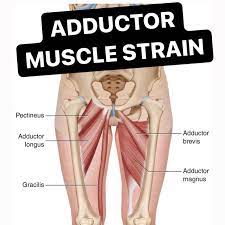
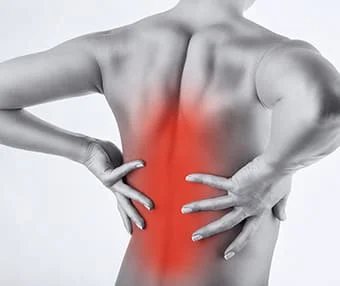
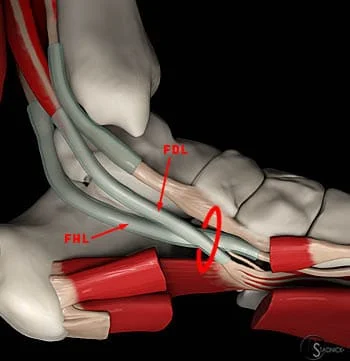
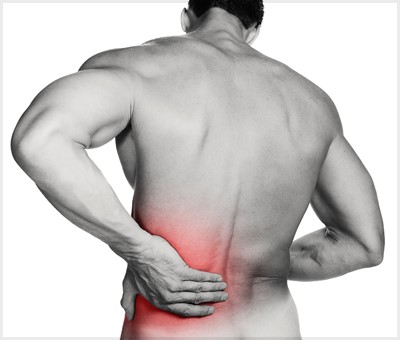
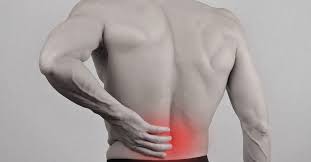
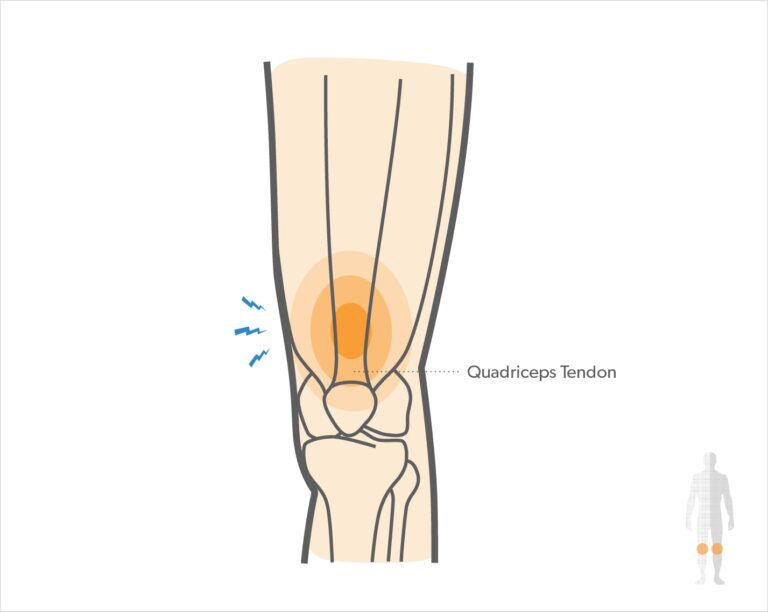
One Comment